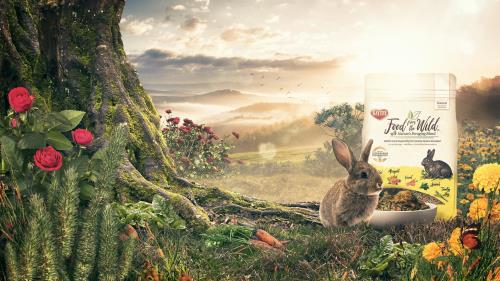What is Small Animal Foraging? | Kaytee
Whether it was the newest video of your favorite bunny YouTube channel or your last trip to the local pet store, you’re bound to hear the word “foraging” mentioned in association with your small animal’s daily diet.
But what is small animal foraging? Does your pet need to forage? And how do you get them to do it?
What is small animal foraging?
Foraging is when an animal spends time searching for food by wandering around. Think of the many animals that spend most of their day walking around eating. From horses to rabbits, many herbivores (animals that only eat plants) spend a large portion of their time eating. Fibrevores are a specific type of herbivore that includes animals like rabbits, guinea pigs, and chinchillas. It’s estimated that in the wild, fibrevores spend at least 70 percent of their time awake searching and eating plants.
What’s more, natural foraging behaviors, such as exploring and chewing, help keep these animals physically and emotionally stimulated and are an essential part of the animal’s health and wellness.
How do small animals instinctively forage for food?
Foraging is an instinctual behavior of small animals in the wild, so most do it naturally. You may notice that your pet scurries around his habitat, burying his nose under the bedding and sniffing around the dishes and toys.
He’s foraging, searching for any food that’s hidden out of sight.

Why is foraging important for your pet's mental and physical enrichment?
When a small animal isn’t in the wild, but is someone’s pet, they often live in habitats with little room to explore. Well-meaning pet owners supply the animal with food and water, maybe even a wheel, and think that’s all their pet needs. But it’s not.
Your pet needs more. Foraging gets your pet up and moving, providing the necessary exercise it needs to stay healthy. Searching for food allows your small animal to engage its mind through problem-solving.
By mimicking your pet’s natural environment, you can easily provide a place for your pet to forage, fulfilling their natural drive to do so, while giving them both physical and mental stimulation.
How can pet owners encourage foraging behaviors?
Regardless of what kind of pet you have, it will thrive when you provide opportunities for it to satisfy its natural instincts. Enriching your pet’s life with foraging is one of those opportunities. You can encourage your pet to forage by:
- Making food progressively harder to find
- Hiding treats in a foraging toy
- Providing different bowls with different foods in varying locations
- Weaving hay or twigs through the cage bars
Whatever combination of ways works for you to incorporate foraging into your pet's diet, you'll support their mental and physical well being and nurture their wild nature. Your favorite furry friend's life will be enriched, and so will their diet!


